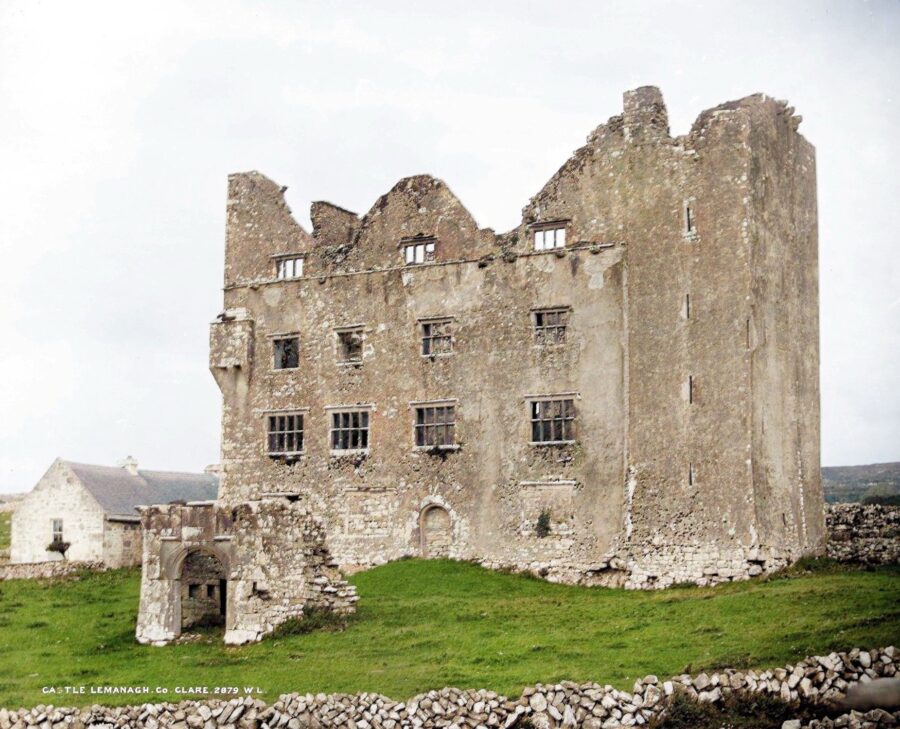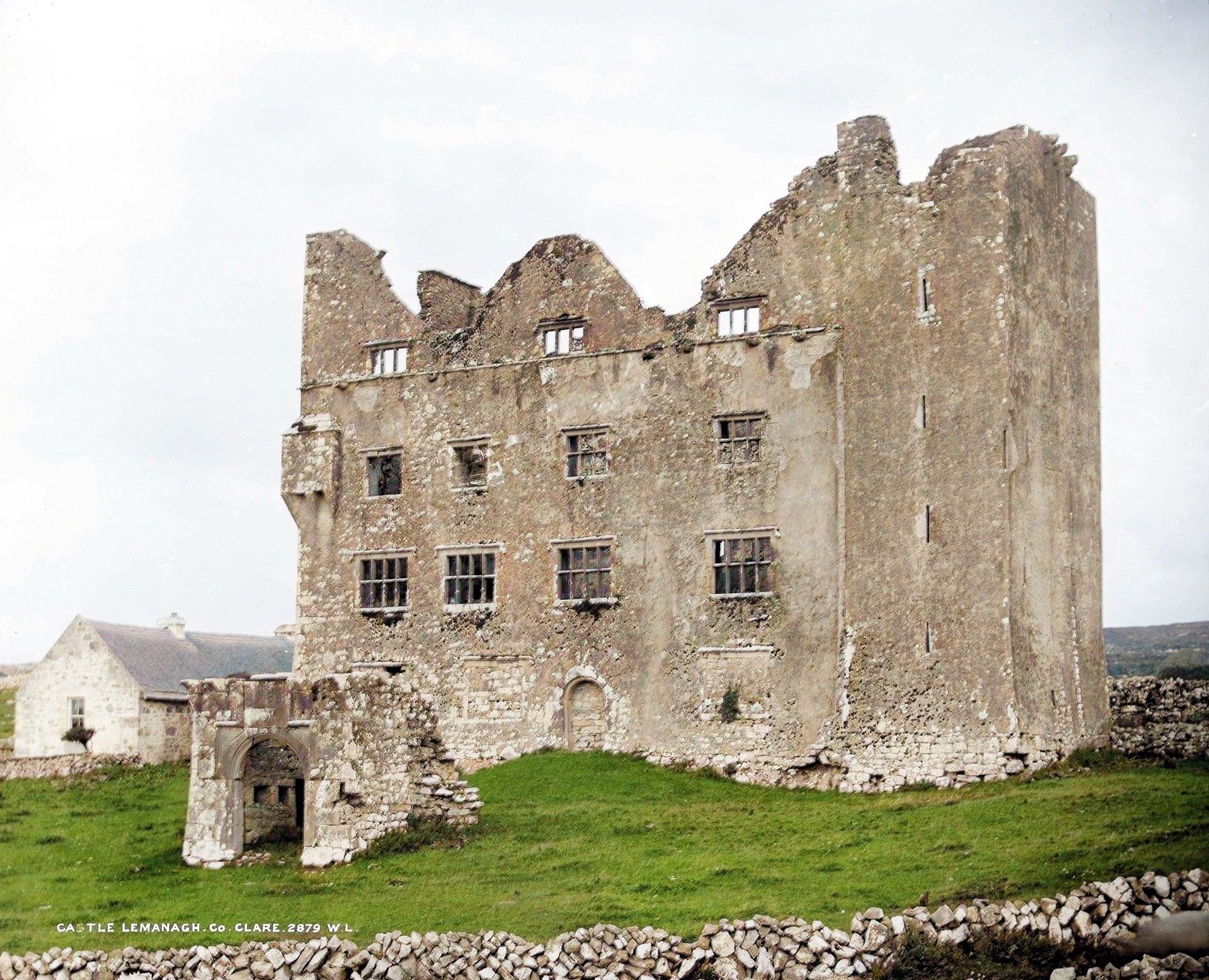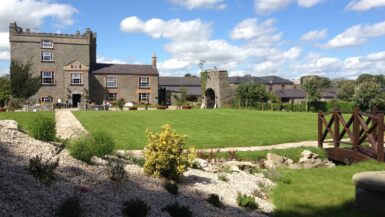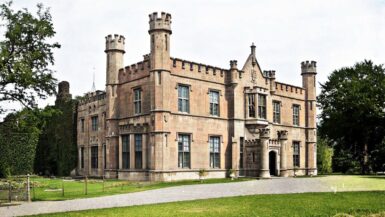Leamaneh Castle, nestled in the beautiful County Clare, Ireland, is a historic site steeped in intriguing tales and captivating history. Often overshadowed by other more popular tourist destinations, Leamaneh Castle’s storied past deserves a closer look. This comprehensive guide will delve into the castle’s origins, the influential families that called it home, and the impact it has had on the surrounding region.
Origin and Early History
Leamaneh Castle’s beginnings can be traced back to the 15th century when it was originally constructed as a tower house. The term “Leamaneh” is derived from the Irish “Léim an Éich,” meaning “the horse’s leap.” This name, shrouded in mystery, evokes images of the wild and rugged landscape that characterizes County Clare.
The original tower house was built by the O’Brien family, who were prominent figures in the region. They were descendants of Brian Boru, the famous High King of Ireland, who reigned during the early 11th century. Over the years, the O’Briens expanded their influence throughout County Clare and were key players in Irish history.
The O’Brien Family and Red Mary
The O’Brien family’s influence in Leamaneh Castle’s history is undeniable, and perhaps the most famous member of this family is Máire Rua O’Brien, better known as “Red Mary.” Born in the early 1600s, Mary was the daughter of Sir Turlough O’Brien and his wife, Lady Honora. She inherited the castle after her father’s death and made it her family home.
Red Mary is a central figure in Leamaneh Castle’s legends and lore. She was married three times, her first marriage being to Daniel O’Neill, with whom she had a son. After Daniel’s death, Mary married Conor O’Brien, her cousin, in 1639. Together, they had eight children and expanded the castle, adding a four-story mansion to the original tower house.
Conor O’Brien was a staunch Irish nationalist, and during the 1640s, he fought against English rule in the Confederate Wars. Tragically, he was fatally wounded in battle, leaving Mary a widow once more. It is said that she married her third husband, John Cooper, just hours after Conor’s death, in order to protect her lands and family.
Red Mary’s reputation as a ruthless and cunning woman is well-documented in local folklore. Legend has it that she had numerous lovers, and when she grew tired of them, she would have them thrown from a high window of the castle. However, there is little historical evidence to support these claims, and many believe that they were exaggerated to tarnish her reputation.
The O’Flaherty Years
Following Red Mary’s death in 1686, Leamaneh Castle was passed down to her descendants, and eventually, through marriage, came into the possession of the O’Flaherty family. The O’Flahertys, like the O’Briens, were influential in the region and played significant roles in Ireland’s history.
During the O’Flaherty’s tenure at Leamaneh Castle, the estate faced numerous challenges. The castle’s strategic position made it a target for invasion, and the family was forced to defend their land and property on multiple occasions. The O’Flahertys also faced financial difficulties, leading to the gradual decline of the castle and its grounds.
Abandonment and Ruin
By the early 18th century, the O’Flaherty family’s fortunes had dwindled, and Leamaneh Castle was abandoned. Over the years, the once-stately castle fell into ruin, and nature began to reclaim the land. The castle’s roof collapsed, and its walls crumbled, leaving only a shell of the magnificent structure that once stood.
Despite its deterioration, Leamaneh Castle continued to capture the imagination of locals and visitors alike. The ruins became the subject of numerous paintings, photographs, and written accounts, preserving the castle’s legacy for future generations.
Current State and Restoration Efforts
Today, Leamaneh Castle stands as a testament to its storied past, and efforts have been made to protect and preserve the site for future generations. The castle is now under the care of the Office of Public Works (OPW) and is listed as a National Monument.
Although the castle remains in a state of ruin, preservation work has been carried out to stabilize the structure and prevent further decay. This includes repointing the stone walls and removing vegetation that threatens the integrity of the building. Despite these efforts, the castle is not currently open to the public due to safety concerns.
Visiting Leamaneh Castle
While visitors are not permitted to enter the castle itself, the site can still be viewed and appreciated from a safe distance. Leamaneh Castle is located along the R476 road between the villages of Kilfenora and Corofin in County Clare. The castle’s striking appearance, with its mix of medieval tower house and 17th-century mansion, creates a picturesque scene that captivates all who pass by.
For those interested in exploring the history of Leamaneh Castle and the surrounding region, the nearby Burren National Park offers an abundance of natural and historical sites to discover. The Burren is a unique karst landscape with a rich archaeological heritage, including ancient tombs, ring forts, and early Christian settlements.







Leave a reply